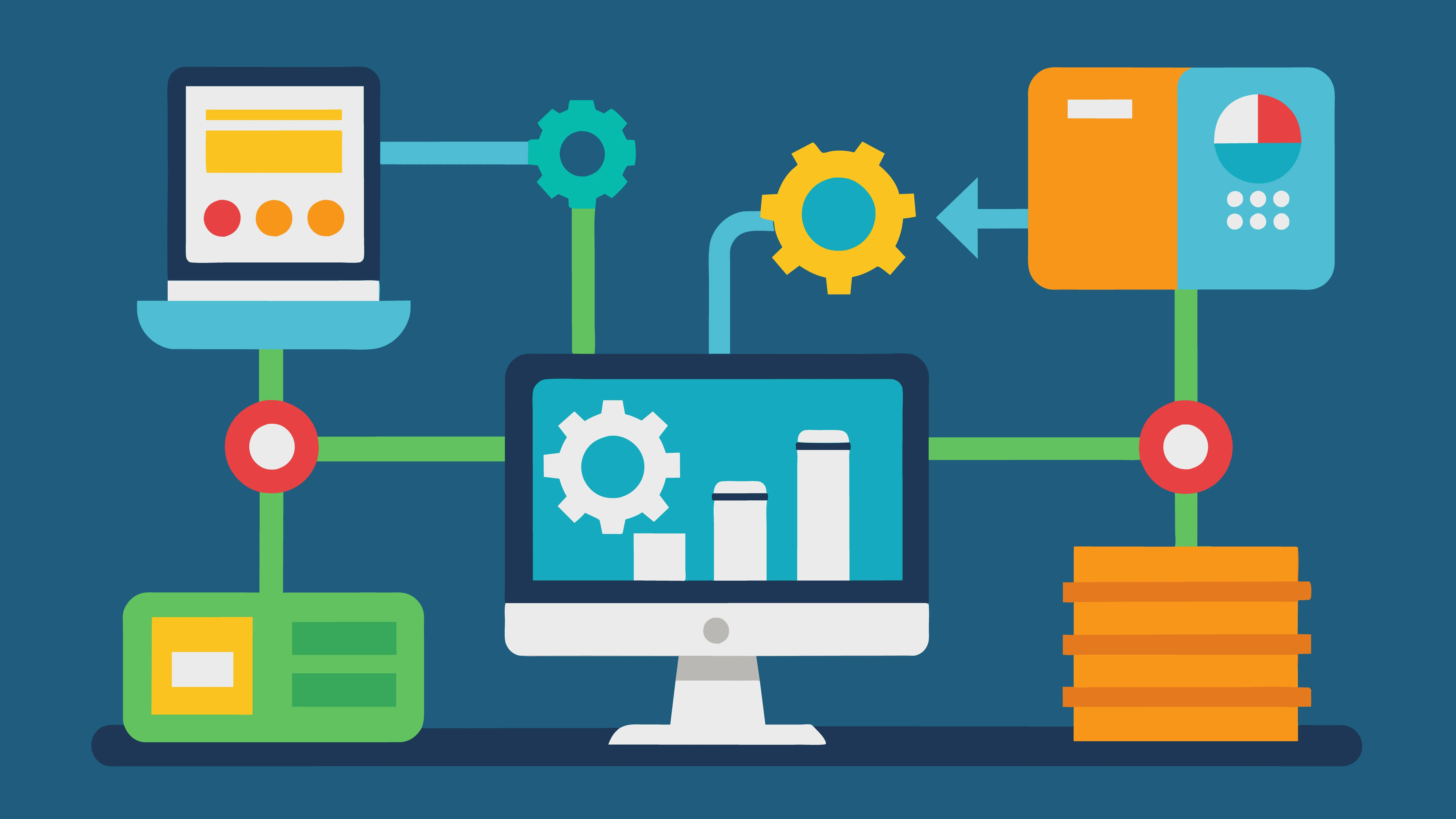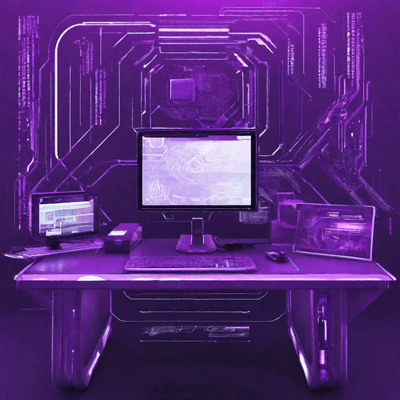A monolithic content management system is an integrated platform that combines both a content management layer and a presentation layer. This means that all functions such as creating, editing, publishing and displaying content are integrated in one software package. A monolithic CMS is often used to manage websites, blogs and online stores, where all elements are controlled from one place.
A monolithic CMS stands out in that it offers one integrated content management environment, which can be both an advantage and a disadvantage compared to other types of CMS, such as headless or microservice content management systems.
In a monolithic CMS, the user interface, database and application server are closely interconnected. This means that users can create and publish content without having to use additional tools or APIs. Such a system is usually easier to install and configure. Unfortunately, it is often more difficult to use for the person adding new content. Another disadvantage is the limited ability to add individual improvements and performance problems.
Advantages of a monolithic content management system

Unified platform
One of the main advantages of a monolithic content management system is its uniform platform. All features such as editing, managing and publishing content are integrated in one user interface. Thanks to this, users can easily manage the entire content creation and publishing cycle without the need to use additional tools or integrations.
Simplified integration
A monolithic CMS often includes a number of built-in tools and features that enable seamless integration with other services, such as data analytics tools, payment systems, and marketing platforms. Thanks to this, users can easily expand the functionality of their website by using ready-made solutions and plug-ins. Simplified integration makes the implementation of new functions or business solutions quick and does not require advanced technical knowledge.
Ease of implementation and use
Monolithic CMSs are designed for ease of implementation and use. Installation and configuration of the system is simple, and ready-made templates and plug-ins allow you to start working quickly. The intuitive user interface allows you to manage content without the need for specialized technical knowledge. Unfortunately, as the company grows, this often becomes a limitation.
Disadvantages of a monolithic CMS

Flexibility limits
Monolithic content management systems can limit flexibility because all their functions are integrated into a single platform. Unlike more flexible solutions such as headless CMS or microservices, monolithic systems offer less opportunities for personalization and customization of functionality. Users are often forced to use built-in templates and plug-ins that may not meet their unique design requirements.
Problematic scalability
Due to their complex, integrated structure, monolithic CMSs can be difficult to scale in response to increased needs. As website traffic increases and your business grows, managing performance and customizing your system can require significant time and financial investment. Additionally, adding new features or services may burden resources, negatively impacting the overall performance of the platform.
Difficulties in adapting to modern technologies
Its integrated nature can make it difficult to easily adapt to rapidly changing technologies and market demands. Implementing modern features such as content personalization, optimization for mobile devices or integration with advanced analytical tools may be a challenge. Due to their closed architecture, monolithic CMSs may not be compatible with modern technological standards, making their integration difficult. They also have constantly increasing vulnerabilities base .
Examples of monolithic CMS
WordPress
WordPress is one of the most famous and widely used monolithic content management systems. Initially created as a blogging platform, over time it developed into a full-fledged CMS, capable of supporting company websites, online stores and information portals. Its built-in features include page and post management, category and tag support, media management, and integration with SEO tools. Thanks to its large community, WordPress offers a rich ecosystem of plugins that extend the functionality of the system.
Joomla
Joomla is another popular monolithic CMS, known for its flexibility and customization. The platform offers solid content management tools, including a content editor, template system, and user management. This system has an extensive set of components and modules that allow you to easily expand the platform's capabilities.
Drupal
Drupal, although more complex than other monolithic CMSs, is also chosen for simple projects. Its modular architecture allows you to create advanced websites and applications, such as educational portals, government websites and social networking sites. Drupal offers extensive user management capabilities, multilingualism and a flexible system of templates and themes.
Each of these monolithic content management systems has its own unique features that can be beneficial for different types of projects. Choosing the right CMS depends on your organization's business and technology needs.

Headless CMS
Headless CMS is a modern alternative that separates the content management layer from the presentation layer. In a headless CMS, content is managed and stored in the administration part, and the appearance part gains access to it via API. Thanks to this, website creators have full control over the way content is presented, using various technologies.
This approach allows for easy integration with mobile apps and other digital channels. Creating cross-platform experiences becomes easier, making a headless CMS an ideal solution for companies that want to deliver content to a variety of devices.
In most cases, websites created based on these systems are fully responsive and always look good because they are based on elements previously prepared by the person creating the website.
CMS based on microservices
Microservices-based content management systems consist of many independent modules that can be scaled and developed separately. Each microservice is responsible for one specific function, such as content editing, publishing, or data analysis.
Thanks to this solution, developers can make the development of individual components independent, which leads to greater flexibility and scalability. Microservices-based CMSs are ideal for organizations that require personalized solutions or manage large amounts of data. While these types of systems can be more complex to implement, they offer unparalleled flexibility and the ability to adapt to future needs.
Hybrid systems
Hybrid systems combine elements of both monolithic and headless CMSs. They operate on the principle of a traditional CMS, but also provide an API that allows for separate management of content and its presentation.
Thanks to this approach, users can use an intuitive management interface and at the same time have the opportunity to personalize the appearance of the website in various channels. However, hybrid systems are most often created by extending the capabilities of a monolith, so they should be carefully checked before deciding on such a solution.
What should you pay attention to when choosing a CMS?

Size and business needs
Choosing the right content management system (CMS) should start with an analysis of the size and business needs of the organization. Small businesses and startups may need a simple system that ensures quick implementation and ease of use. In turn, large enterprises with multiple departments, online stores and diverse websites may require a more advanced CMS with scaling features and support for managing multiple users. Identifying your business needs will help you determine whether ready-made templates, an intuitive interface or advanced analytical tools are required.
Flexibility and future scalability
The flexibility of the CMS system is very important, especially when the company plans to expand. It is worth choosing a system that allows you to expand functions through plugins, modules or APIs. The CMS should also allow you to easily customize templates and user interface to meet changing market demands. If a company plans to implement new content distribution channels, such as mobile applications, it is good to choose a CMS that supports such integration.
Level of security and accessibility
Security is an extremely important aspect when choosing a CMS. Sensitive data, such as customer and transaction information, must be protected against attacks. It is worth paying attention to whether the system offers security functions, such as regular updates, data encryption or multi-level user authorization. Additionally, it is worth checking how often security vulnerabilities are found in the CMS.
Summary
Monolithic CMSs provide simplicity and an integrated environment that may work well for companies with fewer technological requirements and those that want to start "at cost". However, as organizations grow, inflexibility and scaling limitations can pose challenges, requiring companies to require more complex solutions such as a headless CMS.
Therefore, it is worth considering whether a monolithic CMS will be suitable for the organization's long-term goals, taking into account both current and future technological and business needs. Analyzing business size and needs, security levels, integration options, and system scalability are necessary to ensure that the selected CMS platform will support the organization in achieving its goals while remaining secure, effective, and relevant to the changing technology environment.
Frequently Asked Questions
Is a monolithic CMS right for my business?
It depends on the specifics of your company. Monolithic CMSs are best for companies that need a simple and integrated content management solution. This is a good option mainly for very small companies and sole proprietorships.
What are the main differences between monolithic and headless CMS?
Monolithic CMS combine content management and presentation in one system, offering a unified platform for creating and publishing content. Headless CMS, on the other hand, separates the content management layer from the presentation, allowing the use of any front-end technologies and enabling the distribution of content on various platforms.
Does a monolithic CMS offer integration possibilities with other systems?
Yes, many monolithic CMSs offer plugins and modules that enable integration with analytical tools, payment systems or marketing platforms. It is important to check the availability of these features before choosing a specific CMS.
Will a monolithic CMS scale as my business grows?
Monolithic CMSs can be more difficult to scale compared to microservices-based systems. However, many of them offer advanced tools that allow you to scale within certain limits. It is worth conducting a thorough analysis of scaling requirements before implementing the selected system.

Adam Naworski



